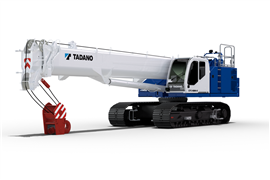Embracing the benefits of AI
23 June 2023
Even as we all begin the somewhat-routine process of deciphering what to make of the latest in tech offerings – in this case the surge of AI (artificial intelligence), especially in the form of products like ChatGPT – it’s important to remain focused on what we already know about it, and essentially how we’re already using it.
 (Photo: Markus Spiske)
(Photo: Markus Spiske)
For starters, AI in the construction and transport industries is already here, and it’s poised to transform both accordingly. So, as we enter this next frontier, it’s essential to understand what artificial intelligence is and how it offers unique solutions to advance the productivity and performance of our industries.
A great place to probably start is to dispel the notion that the hype around ChatGPT and its AI-adjacent tributaries are only leading to some perceived global apocalypse. On the contrary, it behooves us all to recognise that the many artificial intelligence products coming to market for construction and transportation are practical tools, not existential threats.
In fact, in a recent announcement, American multinational software corporation Autodesk – which develops products and services for the architecture, engineering, construction and manufacturing industries – explained its intention to release the first of what will be a variety of applications under its Autodesk Forma initiative, an AI-enabled construction industry cloud intended to extend a single set of data across the design, construction and facilities management and operation phases of built assets.
While AI and machine learning are featured prominently, the automation in Forma is designed more to streamline technical steps rather than take humans out of the equation – a pattern we see with other construction AI initiatives from dozens of progressive vendors bringing products to market for contractors and other construction and transport professionals.
Deeper understanding
It’s important to remember that, while ChatGPT and generative AI are grabbing headlines, most AI in industry is quietly plugging away, not inventing things like a human being, but crunching numbers, evaluating possibilities and solving problems that have more variables than the human mind can deal with. If nothing else, quality and precision are two requirements for AI used in applications with substantial real-world consequences.
In addition, the results have to be explainable in our industries. Whereas ChatGPT can generate a piece of text without citing sources or explaining how it came to certain conclusions, a structural engineer, for example, isn’t going to put his or her licence on the line certifying that an AI-assisted design is sound and conforms to regulations, codes, physics, etc., without understanding the algorithms and the processes running behind it.
Moreover, if a contractor is submitting an estimate, they want to know the takeoff performed by a machine-learning application is rigorous enough to perform at least as well as a human being.
But again, the data-rich, complex modern construction environment offers a potential advantage to those businesses that can harness data, produce intelligible insight and make informed strategic decisions. Where we will likely see AI’s benefits at the beginning stages of this new era are: design and development, project documents, bidding and negotiation, permitting and approvals and finalising of pre-project communications and planning.
At the end of the day, countless applications for construction incorporate varying levels of explainable artificial intelligence, which aren’t intended to replace human work as much as to do things in ways humans cannot. AI both now and in the foreseeable future within our industries will not duplicate human creativity, but rather help execute on it in ways that eclipse human analytical capabilities.
While that might sound a little scientific, it will make much more sense once it starts to productively benefit some of the above-mentioned areas, as well as more day-to-day operations, like predictive maintenance, site safety, robotics, project management, quality control and building performance.
STAY CONNECTED


Receive the information you need when you need it through our world-leading magazines, newsletters and daily briefings.
CONNECT WITH THE TEAM












